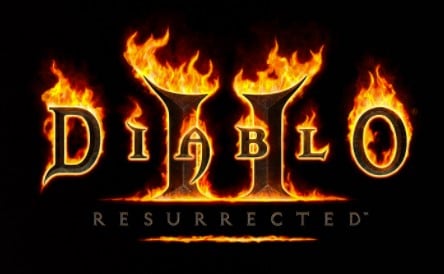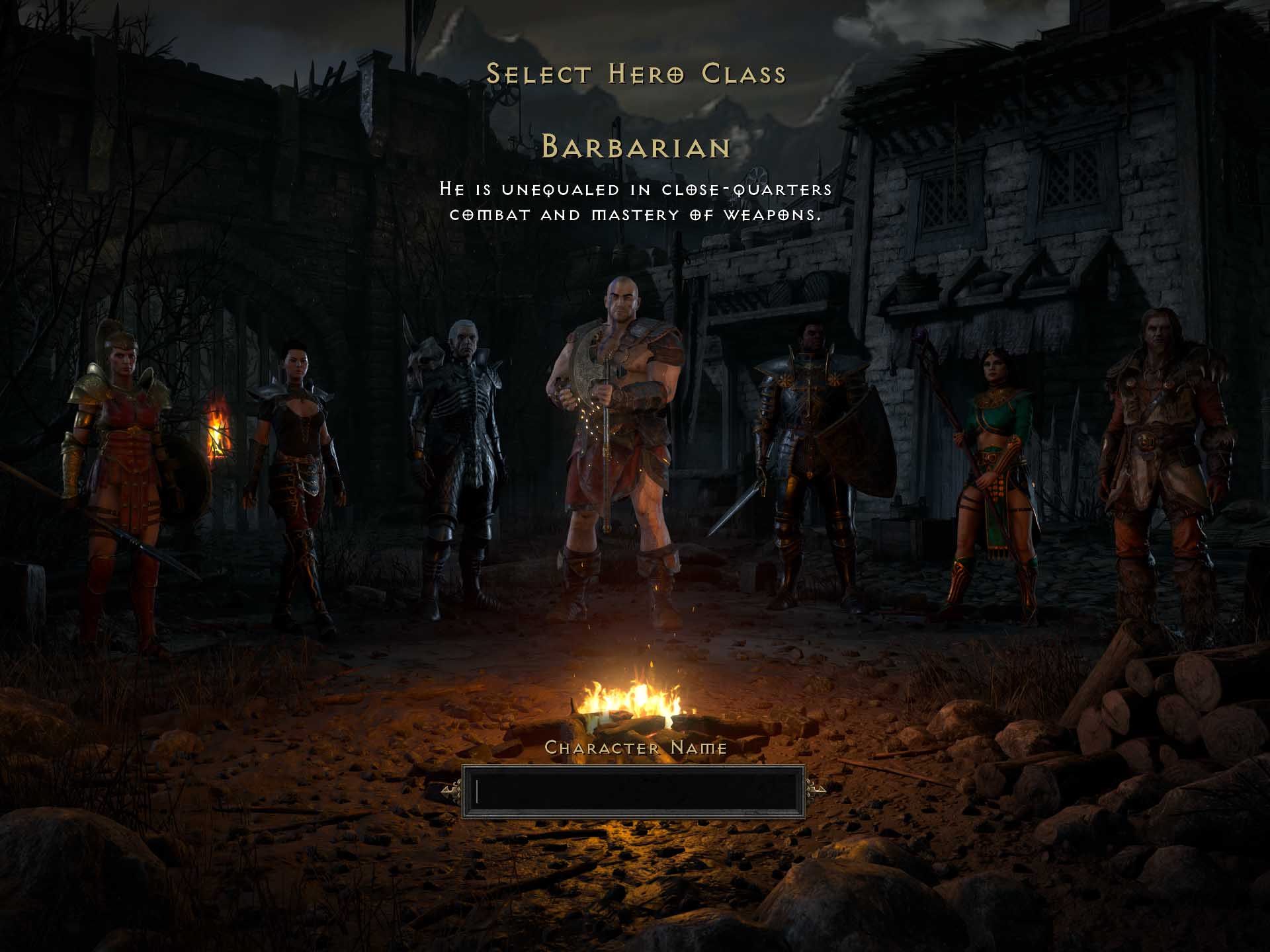
Diablo 2: Resurrected confronts you with a difficult decision as soon as you begin the game: Which class makes the most sense for your first build? Do you go with someone durable who can stand in the middle of a mob and fight with their hands, or do you choose someone with minions to fight for them? There are many more similar questions surrounding the seven individual characters, which I hope to help clear up here with this Diablo 2: Resurrected beginner's guide to classes.
Amazon
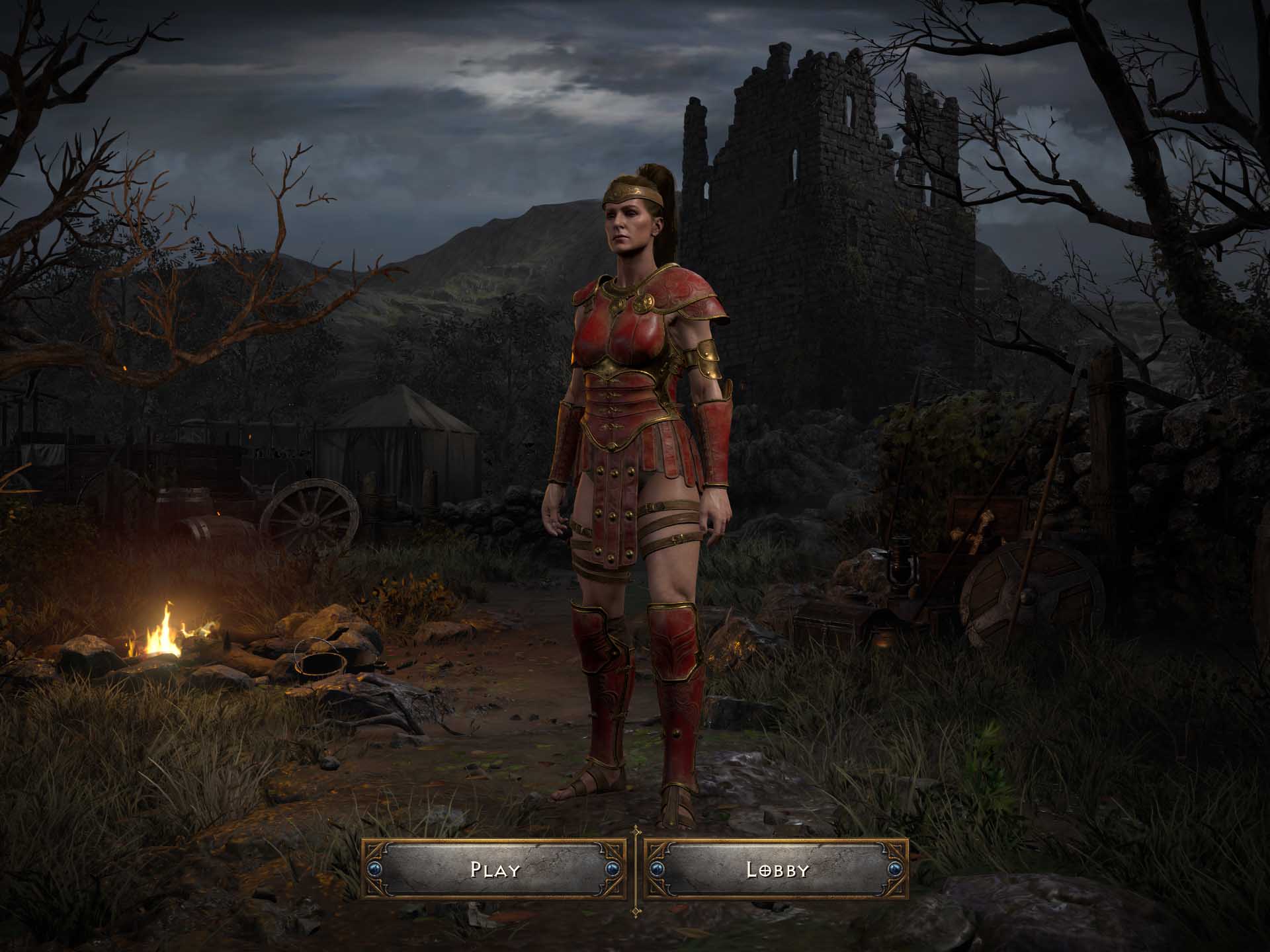
The Amazon excels at moving quickly, attacking from range, and destroying massive quantities of enemies thanks to area-of-effect (AoE) skills. Amazons can use bows, crossbows, spears, and javelins to best effect, and they also excel at player-versus-player (PvP) combat with the right gear and skills. A powerful Valkyrie ally can be summoned to help the Amazon in battle.
The Amazon's skill tree involves (like every other class) three separate branches. They are Javelin and Spear, Passive and Magic, and Bow and Crossbow. Unlike some other characters, you're generally going to choose just two branches.
Passive and Magic is a must due to its ability to grant you better survivability, more damage, and a Valkyrie companion. It mixes well with either Javelin and Spear or Bow and Crossbow.
The Javelin and Spear tree is immensely popular due to the Javazon builds. As the name implies, you focus on dealing out massive damage with javelins. Poison damage will be your go-to until you reach a point where lightning damage takes over. The Javazon is a master of the secret cow level.
Bow and Crossbow takes you down a different route, focusing on cold, fire, and magic damage. Want to see hundreds of arrows pass through your enemies? Choose Strafe. Want to be sure each attack hits true, especially in PvP? Try Guided Arrow.
Assassin
The Assassin is a truly interesting class that might not get enough love. Added in the Lord of Destruction expansion for original Diablo 2, she can either kick butt with spinning heels and fists or can lay deadly traps for unsuspecting victims. Thanks to Diablo 2: Resurrected runewords, there's even a build that allows the Assassin to use the Barbarian's Whirlwind attack. The Assassin excels at PvP combat but can also be a potent late-game PvE class.
Get the Windows Central Newsletter
All the latest news, reviews, and guides for Windows and Xbox diehards.
The skill tree is split into Martial Arts, Shadow Discipline, and Traps, generally offering up a mix of two trees for strong builds. Many people, for player-versus-everyone (PvE) mode, will focus on Traps and Shadow Discipline, while players with PvP in mind will substitute Traps for Martial Arts.
Martial Arts skills add normal and elemental damage to the Assassin's physical attacks. With the right combination of passive and active abilities, a single strike from an Assassin can send a dueling opponent to an early grave. Because of the focused nature of these attacks, the Martial Arts tree is best suited for a life of PvP.
Shadow Disciplines mainly provide buffs and boosts to the Assassin, to be used with either one of the other skill trees. Fade and Burst of Speed are both essential skills for most builds, and you can even sink points into Shadow Master if you'd like to summon a companion with access to all of your skills.
Traps are where the Assassin really excels, at least in PvE combat. Death Sentry and Lightning Sentry are what most builds aim for, as they can deal out a massive amount of damage without you even getting close to the enemy.
Barbarian

The Barbarian really only knows how to do things one way. He gets right in everyone's face and deals massive damage while double-wielding any weapons in the game. He can buff himself and party members by shouting, and he can train to become a master of most weapon types in the game. The Barbarian is great for magic finding (MFing), general PvE, and PvP.
The Barbarian's skill tree is split into Warcries, Combat Masteries, and Combat Skills. Most builds will pull skills from all three trees, and you'll be hard-pressed to find one that doesn't put a lot of focus on Warcries. They're so valuable that many people use a Call to Arms runeword (which grants access to some shouts) as a buff tool before heading into battle.
While skills in the Warcries tree can be used in the early game to taunt or dispel monsters, the real attractions are skills like Battle Orders and Battle Command. The former adds a ton of life, mana, and stamina to everyone in your party. The latter boosts all skills by one. Find Item is also incredibly useful if you create a Barbarian for magic finding, as it allows you to search bodies a second time. Pitzerkers rely on this skill.
Combat Masteries usually involve one weapon type maxed out with skill points, as well as some points invested into Natural Resistance. It's an easy way to add points to resistance totals which aren't always easy to max out.
Combat Skills are the Barbarian's specialty. Many late-game build will use either Frenzy, Concentrate, or Whirlwind, or Berserk to deal massive amounts of damage.
Druid
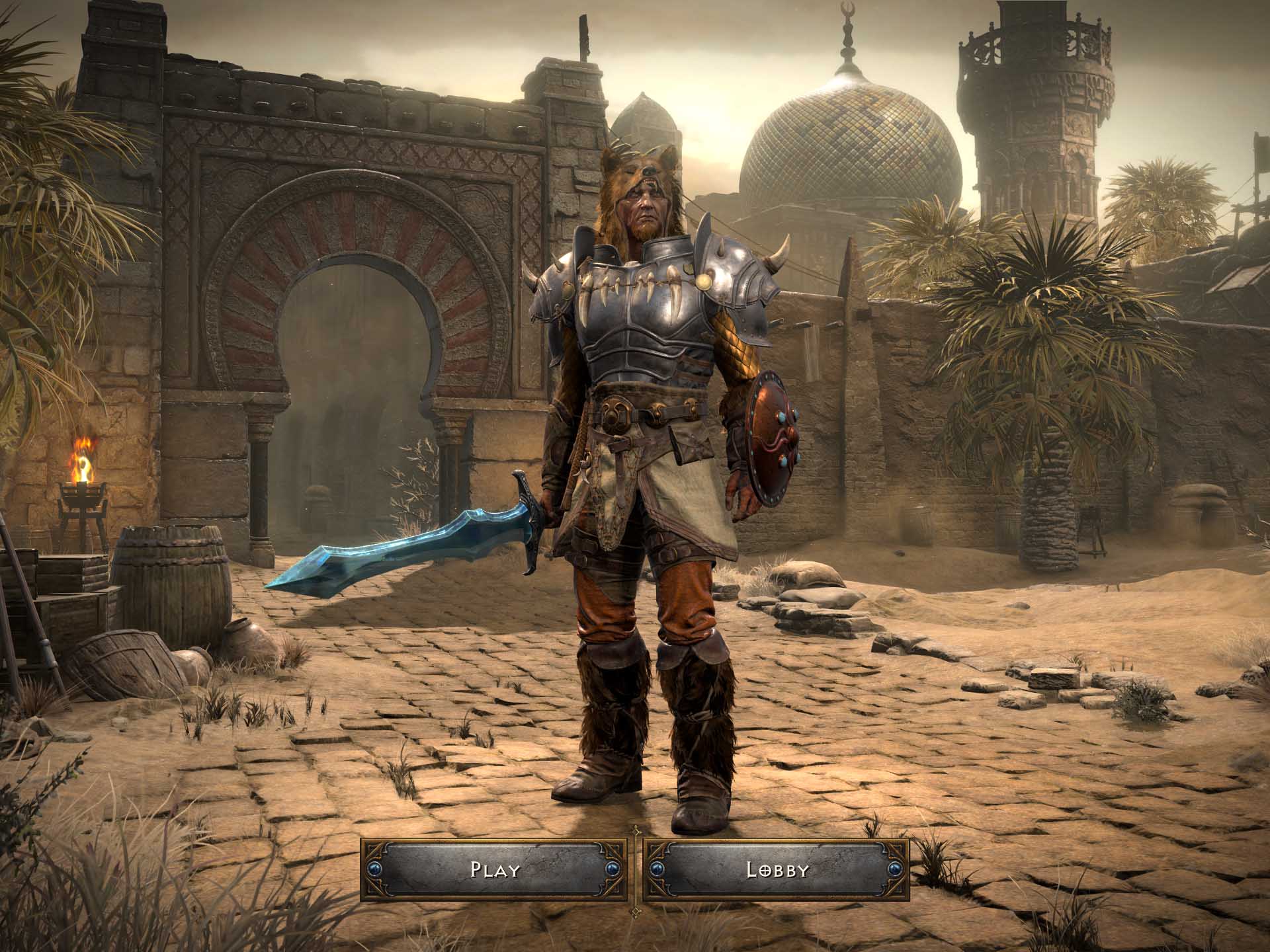
The Druid was introduced alongside the Assassin in the Lord of Destruction expansion. He is sort of a mixture of some other classes thanks to summoning, elemental, and melee abilities. The Druid excels at PvP when in wolf or bear form, but can also do a lot of damage with elemental skills.
The Druid's skill tree is split into Elemental, Shape Shifting, and Summoning. Builds generally involve points into Summoning for help on the battlefield, as well as one of the other two trees.
The Elemental tree includes Tornado and Hurricane, two staples that you'll see most Druids using in PvE play. The mix of cold and physical damage helps deal with monsters with immunities in the late game. Some players will go with Armageddon and Fissure instead to deal fire damage.
Shape Shifting skills allow you to turn your Druid into a wolf or bear. Associated melee skills are included in this branch of the tree, allowing you to add elemental damage like fire and poison to your physical attacks. A Druid in either animal form can deal and receive a ton of damage; consider this for a PvP build.
The Summoning branch is used by the majority of Druid builds, whether Elemental or Shape Shifting. The Oak Sage summon is invaluable in its life-boosting ability for you and your party. And the Summon Dire Wolf and Summon Grizzly can especially help if you're traveling through the world of Sanctuary without a party.
Necromancer
The Necromancer is a bit of sleeper, in the sense that many people think his frail form signifies weakness. However, played correctly, the Necro is one of the most powerful classes in the game. He relies on weakening enemies with curses before hitting them with poison daggers or bone spears called from the world of death. The Necro also has the ability to resurrect skeletons and reanimate dead enemies to fight next to him.
The Necromancer's skill tree branches into Summoning, Poison and Bone, and Curses. Most builds will feature a mix of the Curse branch and one of the others. Summoning with Poison and Bone isn't as common.
Summoning skills give the Necromancer the ability to raise skeleton warriors, skeleton mages, and golems (clay, iron, and fire). You can also reanimate fallen enemies to fight in your pack. Many popular and effective builds will go all-in with summons. A high-level Necromancer with a full pack of skeletons and revives can easily handle all the game's content, even on Hell difficulty.
Poison and Bone skills are an alternative to summoning. Corpse Explosion, although it comes along at level 6, only gets better as you move through the game thanks to its scaling. Bone Spirit and Bone Spear are also popular, as is Poison Nova.
Curses play well with nearly every build. After all, who doesn't want to make enemies take more damage, go blind, move slower, and have less elemental resistances? Which curses you choose will depend on the build, but you generally only need to use a couple of natural points for the curses to be viable. This keeps a lot of other natural skill points free for the other trees.
Paladin
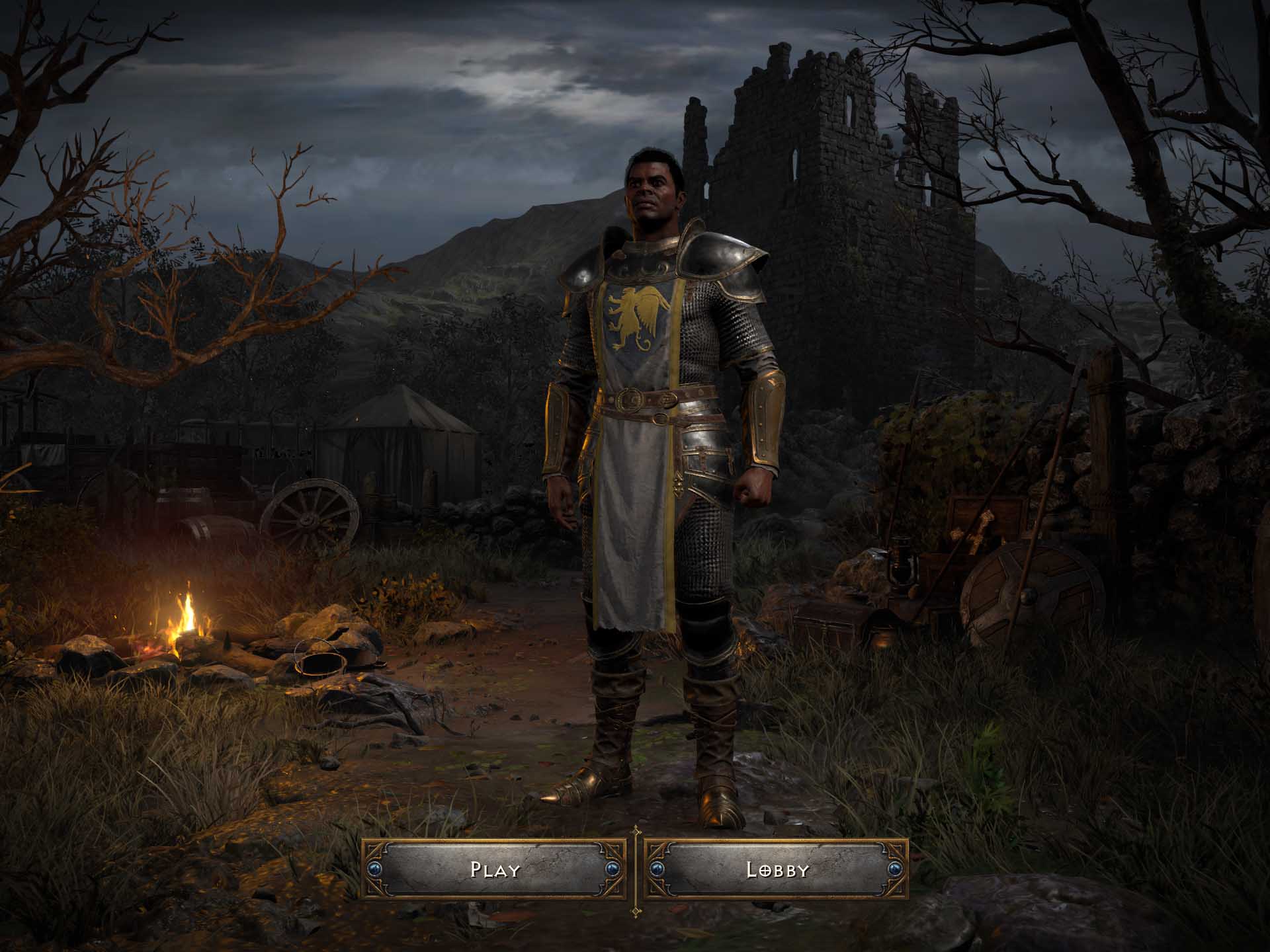
The Paladin is arguably the strongest class in Diablo 2: Resurrected. He can easily handle the Pandemonium Event (for the Annihilus Charm) and Uber Bosses (for the Hellfire Torch) thanks to the Smite skill and supporting build, and he can also handle all end-game PvE content with the Blessed Hammer skill and build. If you're into PvP, you'll probably want to check out the Fist of the Heavens or Charge skills.
Most Paladin builds pull at least one or two skills from each tree branch. The three branches are Defensive Auras, Offensive Auras, and Combat Skills.
Defensive Auras affect the Paladin and any party members. The early game sees the most benefit from these skills, while in the late game many Paladins will focus on Redemption and Vigor as skill switches for regaining life and mana or running much faster than normal. The Meditation aura from this skill tree, which grants much faster mana regeneration, is associated with the Insight runeword. It's an extremely common item for Act 2 mercenaries.
Offensive Auras are much more commonly used as active skills in many Paladin builds, as they give a significant boost to Combat Skills. Concentration is used in Hammerdin builds, Fanaticism is used in Smiter builds, and you can even make some interesting elemental builds — like a Tesladin — with the Holy Shock aura.
Combat Skills include your main attacks as a Paladin. For most builds you will choose one Combat Skill to focus on, with others being used as prerequisites or synergies. Blessed Hammer is the go-to skill for most PvE players, while Smite is what you want to use for tough bosses. Fist of the Heavens is popular for single-target PvP battles, though it requires quite a bit of wealth to be potent.
Sorceress
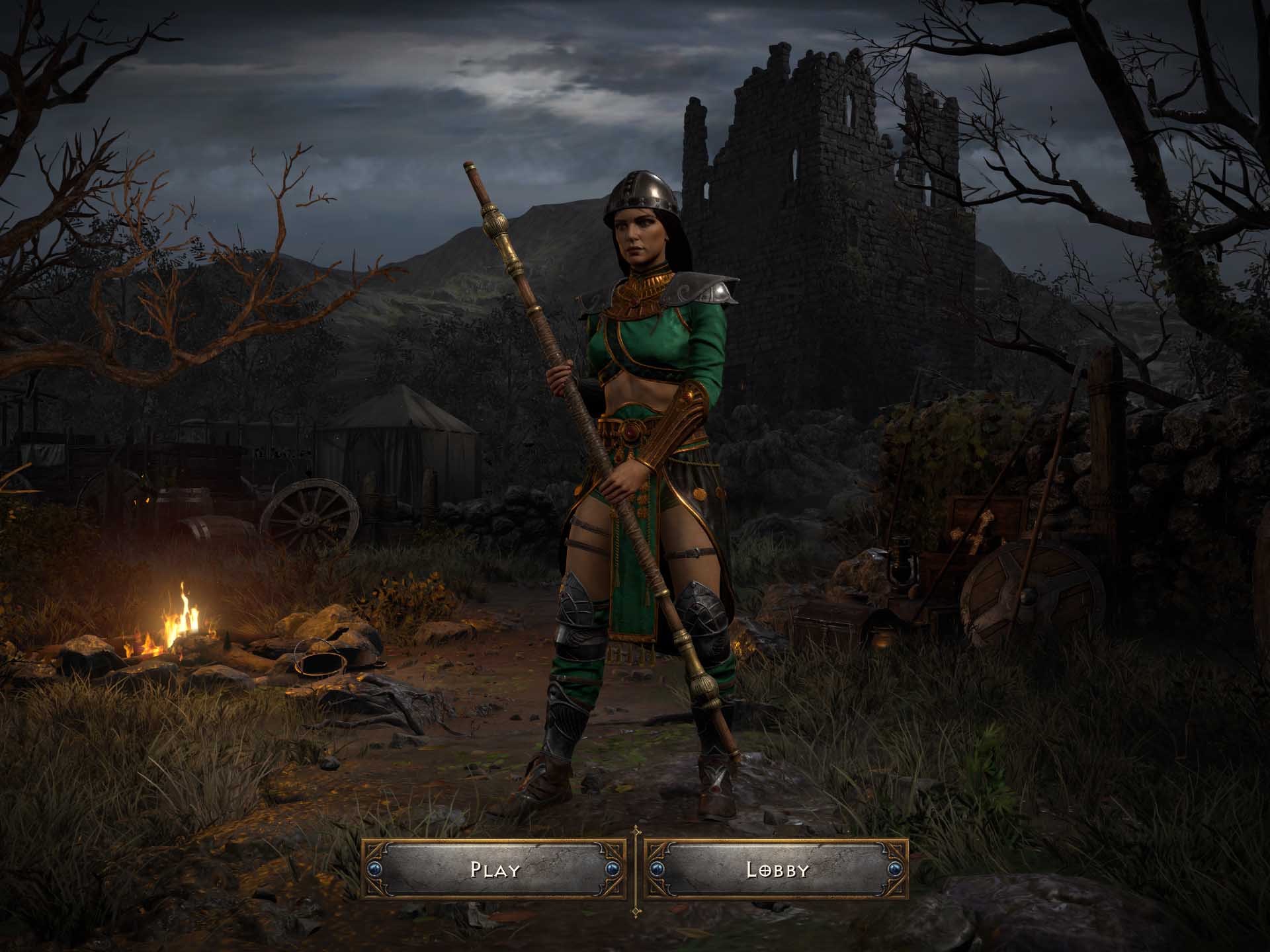
The Sorceress might be alphabetically last on this list, but she's first in most hearts. Her massive damage output from elemental skills, her natural ability to teleport without the Enigma runeword, and her main gear's penchant for additional MF stats combine to create a versatile tool. I wrote a Diablo 2: Resurrected beginner Sorceress build guide if you think this is how you want to start off the next ladder season.
The skill tree splits into Cold, Lightning, and Fire spells, each with a mix of offensive and defensive measures. Most Sorceress builds will focus heavily on one or two branches, with a point here and there invested in a third for utility. For example, in the guide I listed above I suggest using Fire Ball and Frozen Orb together to deal with monster immunities.
Cold spells included Blizzard, Frozen Orb, and Frost Nova, all powerful chilling effects. Cold Mastery is also there to lower enemy cold resistance, and a few magical cold armors are available to boost your defense. A Cold-based Sorceress is popular in the early game or for dedicated MFing in places like Act 2's Ancient Tunnels.
Lightning spells are what most players shoot for in the end-game. A Sorceress with Lightning, Chain Lightning, and Lightning Mastery skills, as well as a mercenary with the Infinity runeword equipped, is unstoppable. Unfortunately, this is also the most expensive way to go and will require quite a bit of work and time on your part. The Lightning tree is also where Teleport and Static Field are found, two skills that every Sorceress should use.
Fire spells deal a ton of damage, but due to enemy resistances in the later game must be mixed with some other type of damage. Fire Ball, Hydra, and Fire Mastery can quickly overwhelm enemies with pure fire output. There are also some very interesting builds based around the Enchant skill, which adds significant fire damage to an allied target's weapon. Warmth is a Fire skill that every Sorceress should invest some points into, as it increases natural mana regeneration.
Which class are you choosing first?
Whether you're completely new or have just been on a long hiatus, Diablo 2: Resurrected should bring a lot of players into the world of Sanctuary. Which class are you going with first? Let us know in the comments section! And be sure to have a look at our collection of the best laptops for playing Diablo 2: Resurrected if you're worried about your PC not being able to keep up with the updated graphics.

Cale Hunt brings to Windows Central more than eight years of experience writing about laptops, PCs, accessories, games, and beyond. If it runs Windows or in some way complements the hardware, there’s a good chance he knows about it, has written about it, or is already busy testing it.
